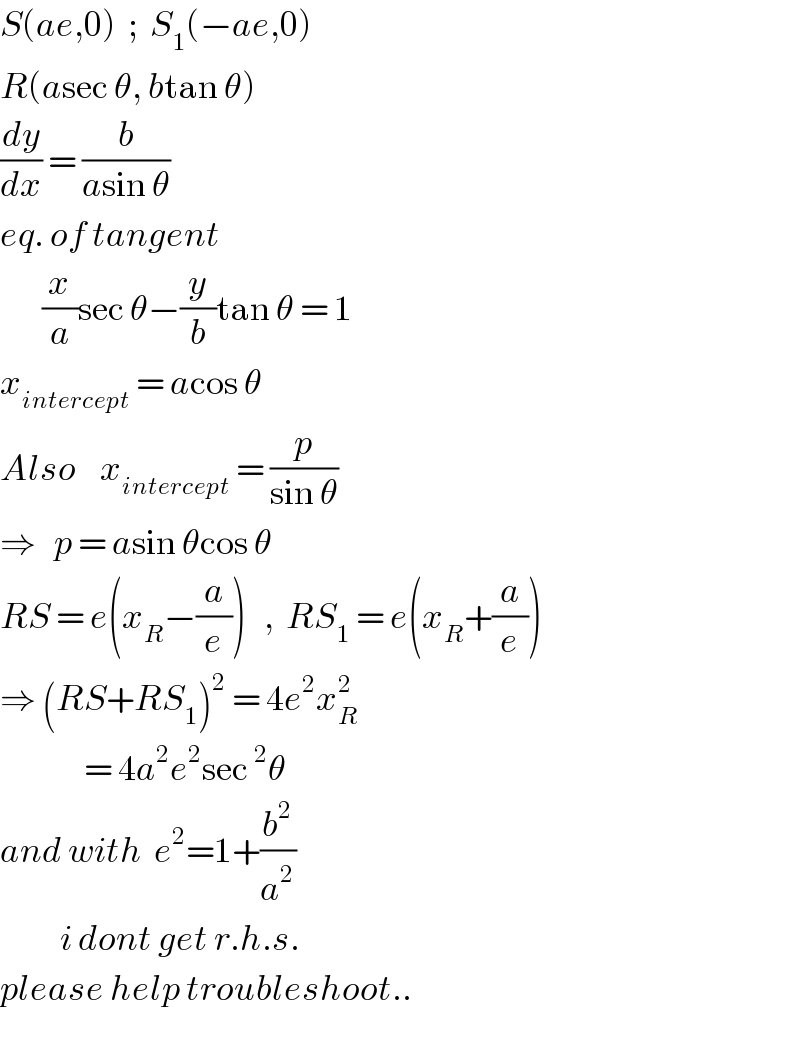
Question and Answers Forum
Question Number 50754 by peter frank last updated on 19/Dec/18

Answered by tanmay.chaudhury50@gmail.com last updated on 20/Dec/18

Answered by tanmay.chaudhury50@gmail.com last updated on 20/Dec/18
![R(asecθ,btanθ) centre(0,0) S(c,0) S^′ (−c,0) c=(√(a^2 +b^2 )) tangent ((xsecθ)/a)−((ytanθ)/b)=1 distance from (0,0) is p p=∣((−1)/(√((((secθ)/a))^2 +(−((tanθ)/b))^2 )))∣ (1/p^2 )=((sec^2 θ)/a^2 )+((tan^2 θ)/b^2 ) LHS 4a^2 (1+(b^2 /p^2 )) =4a^2 +((4a^2 b^2 )/p^2 ) =4a^2 +4a^2 b^2 (((sec^2 θ)/a^2 )+((tan^2 θ)/b^2 )) =4a^2 +4b^2 sec^2 θ+4a^2 tan^2 θ =4a^2 (1+tan^2 θ)+4b^2 sec^2 θ =4sec^2 θ×(a^2 +b^2 ) =4c^2 sec^2 θ [since a^2 +b^2 =c^2 ] RHS (RS+RS′)^2 RS=(√((asecθ−c)^2 +(btanθ)^2 )) =(√(a^2 sec^2 θ−2acsecθ+c^2 +b^2 (sec^2 θ−1))) =(√((a^2 +b^2 )sec^2 θ−2acsecθ+c^2 −b^2 )) =(√(c^2 sec^2 θ−2acsecθ+a^2 )) =csecθ−a RS^′ =csecθ+a (RS+RS^′ )^2 =(2csecθ)^2 =4c^2 sec^2 θ proved R](Q50786.png)
Answered by ajfour last updated on 20/Dec/18

